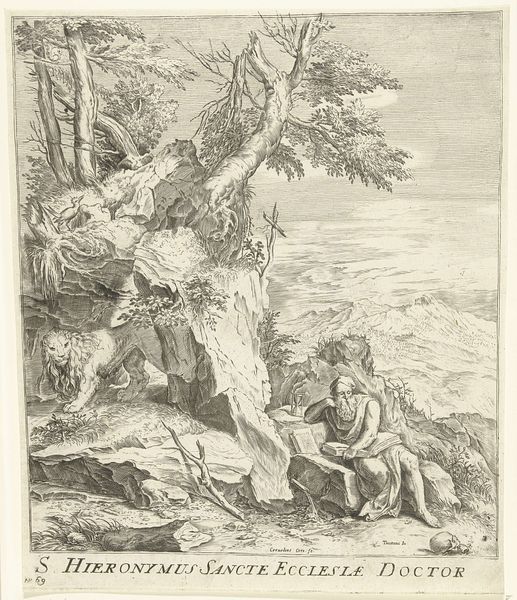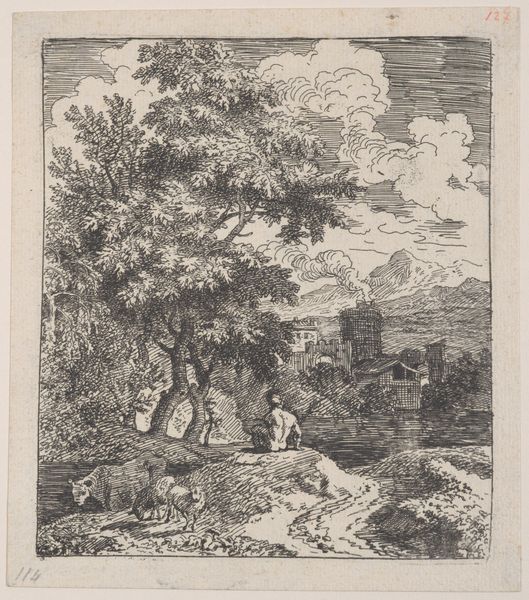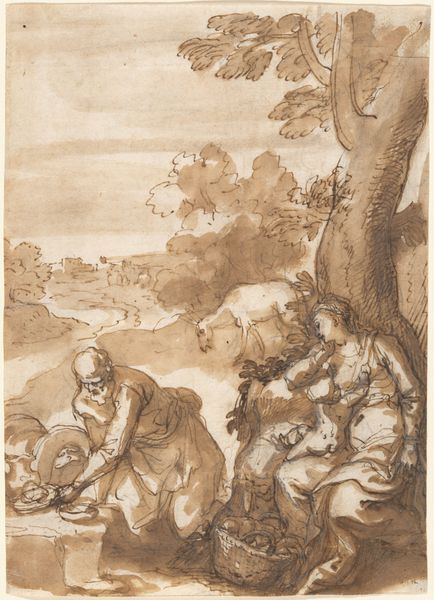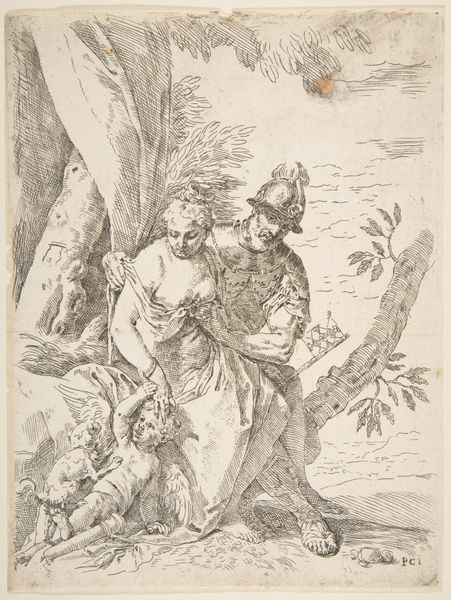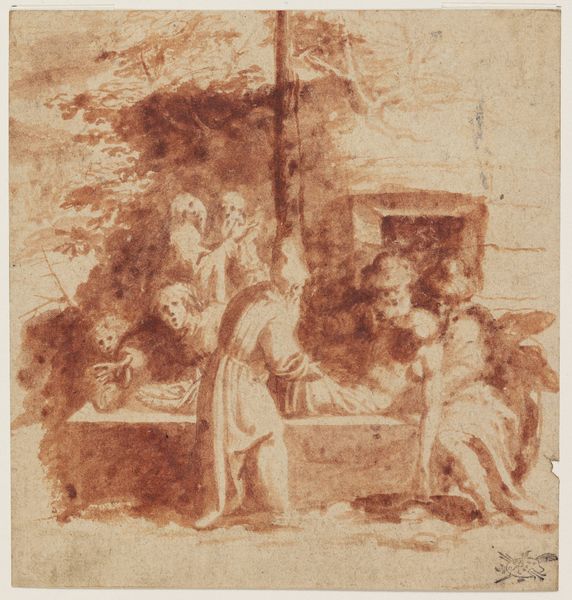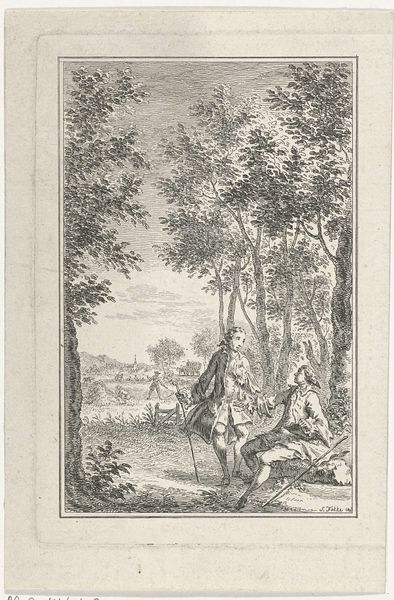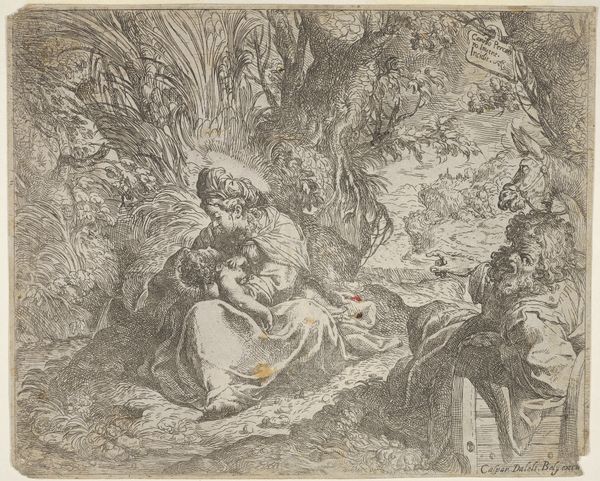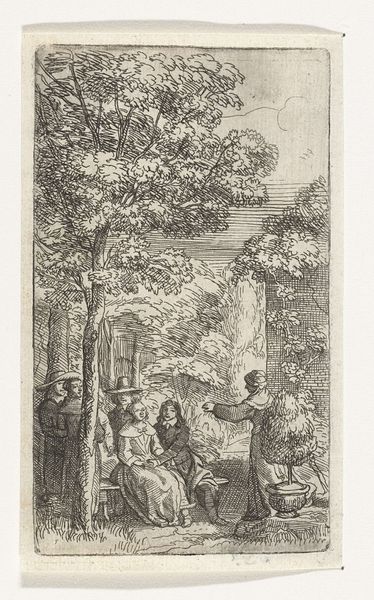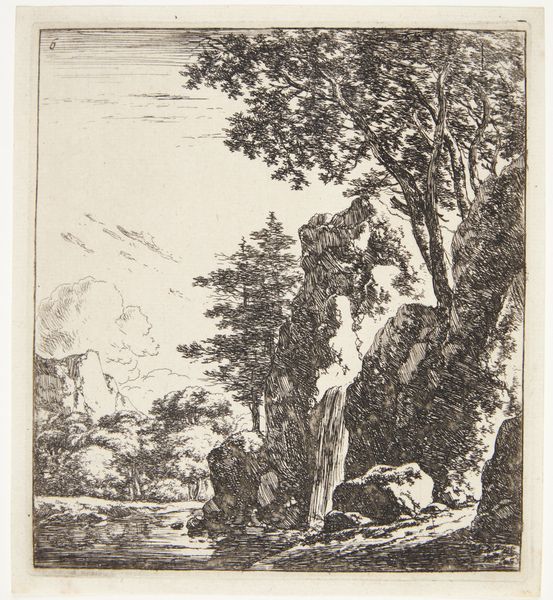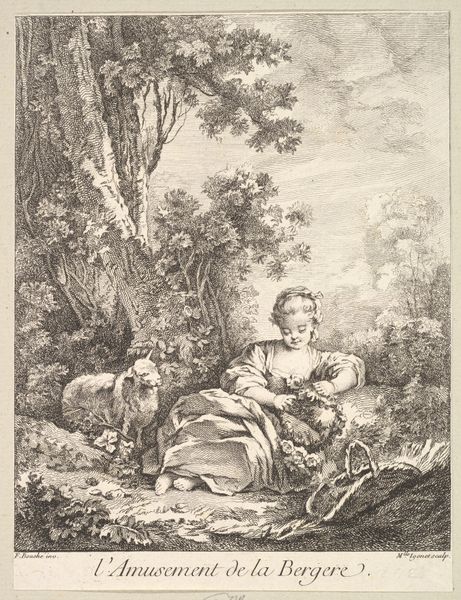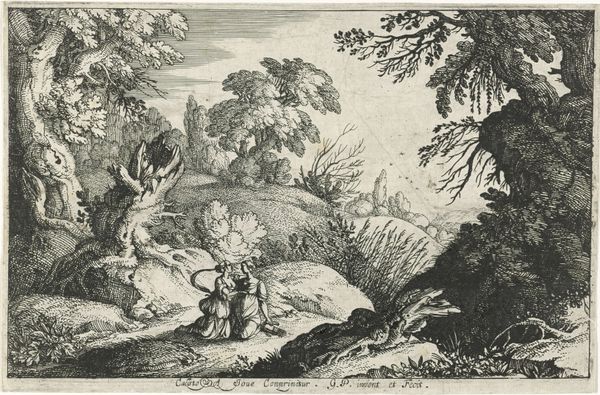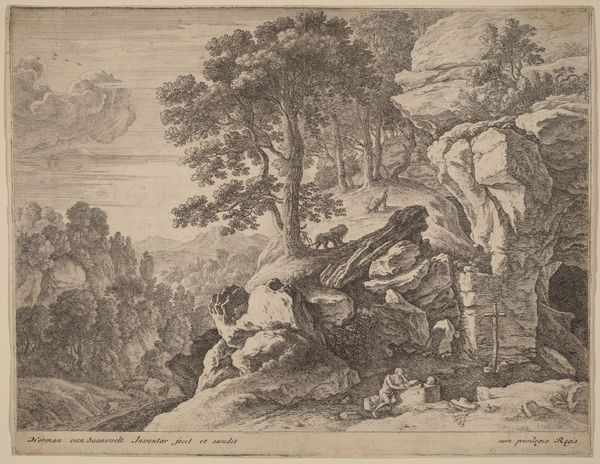
Nymfen Korsika mishandles af en satyr 1598 - 1657
0:00
0:00
drawing, etching, ink
#
drawing
#
narrative-art
#
baroque
#
ink painting
#
etching
#
pencil sketch
#
landscape
#
charcoal drawing
#
figuration
#
ink
#
pencil drawing
Dimensions: 95 mm (height) x 65 mm (width) (bladmaal)
Curator: This is an etching by Bartholomeus Breenbergh, likely created sometime between 1598 and 1657. Its title? "Nymph Corsica Mistreated by a Satyr." Editor: A harsh scene rendered with such delicate lines. The composition is arresting. There is definitely tension between the rocky darkness on the right and the idyllic scene in the left corner. It feels claustrophobic and...unsettling. Curator: It is interesting that you describe the left side as idyllic because the complete title and the scene represented here is not exactly idyllic. This work aligns with the Mannerist interest in complex narratives drawn from mythology and the representation of violence, frequently sexualised in art of this era. Editor: Indeed, and how does Breenbergh engage with these pre-existing themes? It's not *just* a retelling, is it? Where is he positioning himself and the viewer within it all? I see, on one hand, that the meticulous details used in rendering the satyr's furry legs and Corsica's twisting body suggest an investment in representing the human form; still, his work reflects power dynamics that cannot be dismissed. Curator: It is interesting that you emphasize Breenbergh's investment into those topics because even if they may seem not progressive, this etching does a lot about the status of those mythologies at the time when it was produced and consumed. The market forces operating around mythological paintings—particularly in centers like Amsterdam—often demanded titillating and dramatically framed pieces like this one. There was a public appetite for these narratives, shaped, of course, by patriarchal societal structures. Editor: So, a consumption driven by pre-existing structural disparities… Did the social function of this image depend on its visual language being so graphic? Its violence and display feel integral. The female body is shown to the consumer. Is there a resistance within? Curator: To resist conventions in artwork can be more of an issue than not, because most consumers had no access to museums as we know them, so if you were not following some established conventions it was possible your artwork will just not appeal to the patron at all, and end up with no revenue at all. The question is: How do artists negotiate those boundaries in practice? Editor: The etching makes me feel the discomfort involved with power itself, with the historical normalization of specific viewpoints. Still, one must feel admiration for the work the author does, being technically impeccable and able to render so much with ink. Curator: Exactly. Examining this work lets us peek into art's participation in a broader cultural landscape.
Comments
No comments
Be the first to comment and join the conversation on the ultimate creative platform.
